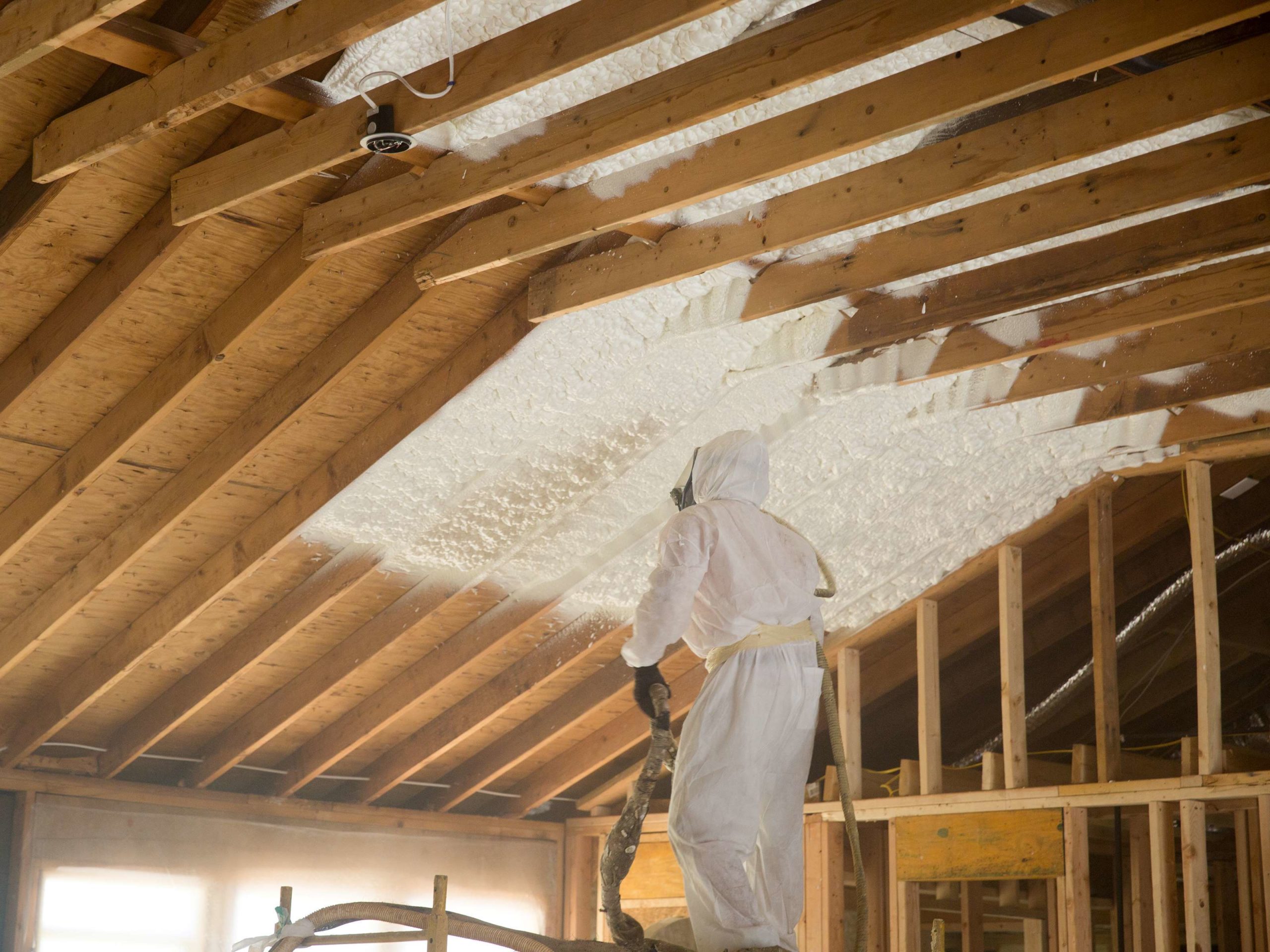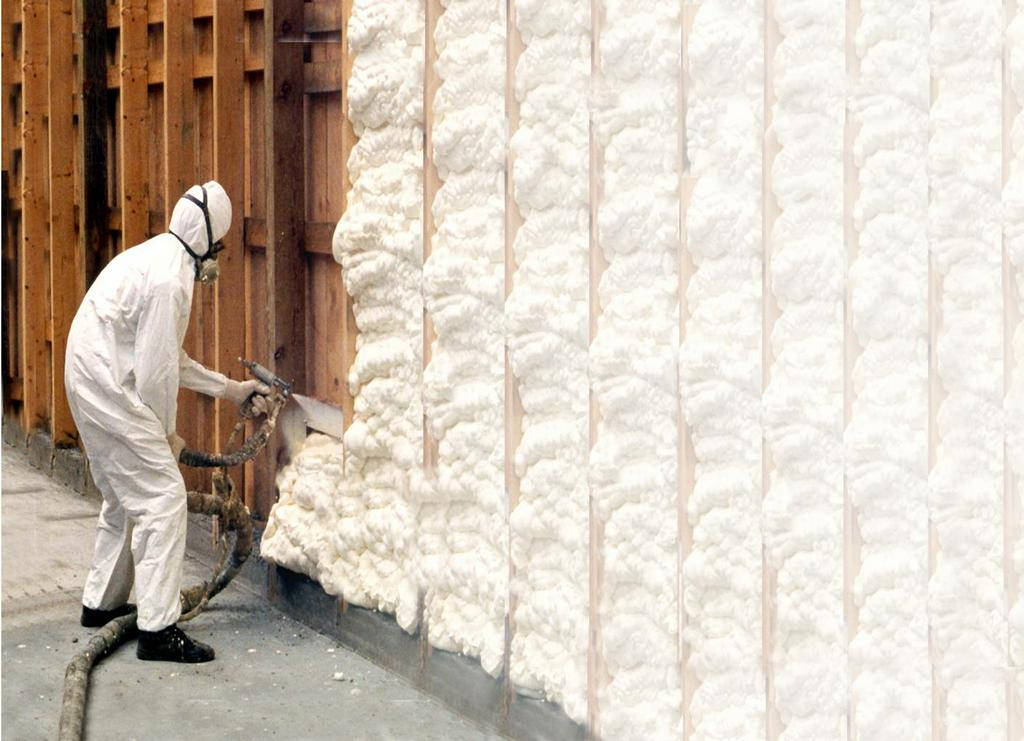The Ecological Impact of Spray Foam: Sustainability Considerations
The Ecological Impact of Spray Foam: Sustainability Considerations
Blog Article
Spray Foam: The Ultimate Solution for Air Sealing and Insulation
Spray foam insulation has actually emerged as a leading remedy for reliable air sealing and thermal insulation, using an one-of-a-kind combination of buildings that set it apart from conventional methods. Recognizing the complete scope of its benefits, installation procedures, and contrasts with other insulation types is essential for making educated choices.
What Is Spray Foam?
Spray foam is a flexible insulation product that integrates the principles of air sealing and thermal resistance to enhance energy efficiency in structures. Composed mostly of polyurethane or other comparable compounds, spray foam is used as a fluid that broadens upon call with surfaces, creating a strong, continual layer of insulation. This special building enables it to fill up spaces, fractures, and voids that traditional insulation materials may overlook, providing a premium air seal.
There are two primary types of spray foam: open-cell and closed-cell. Open-cell spray foam is lighter and extra adaptable, using superb sound absorption and a reduced R-value per inch - Spray Foam. On the other hand, closed-cell spray foam is denser, providing a higher R-value, wetness resistance, and added structural integrity to building components
The application procedure normally includes specialized equipment, ensuring a smooth application that complies with numerous substratums, consisting of metal, concrete, and wood. This adaptability makes spray foam appropriate for both brand-new buildings and retrofitting existing frameworks. Its capability to create an impermeable barrier dramatically adds to decreasing energy usage and improving indoor air quality, therefore making it a recommended option among contractors and home owners alike.
Benefits of Spray Foam Insulation
Among the most considerable advantages of spray foam insulation is its exceptional ability to develop a constant air obstacle, which effectively decreases power loss. Unlike traditional insulation materials, spray foam expands to load spaces and fractures, guaranteeing that air leakage is drastically decreased. This particular not just enhances energy performance but likewise results in reduce energy expenses over time.
In addition, spray foam insulation offers exceptional thermal resistance, contributing to a much more secure interior setting. Its high R-value per inch enables efficient insulation in constrained areas, making it optimal for attics, walls, and crawl rooms. Additionally, the moisture-resistant residential properties of spray foam assistance prevent mold and mildew development, advertising healthier living problems.
Another vital advantage of spray foam insulation is its sound-dampening high qualities (Spray Foam). It efficiently reduces sound transmission in between areas, creating a quieter and much more comfortable home atmosphere. The durability of spray foam also stands apart, as it does not droop or resolve gradually, preserving its performance throughout its life expectancy
Exactly How Spray Foam Functions
Comprehending exactly how spray foam insulation works is vital for appreciating its performance in air sealing and thermal resistance. Spray foam insulation includes two primary elements: isocyanate and polyol resin. When these components are blended, they undergo a chain reaction that causes the product to increase swiftly, creating a thick foam that fills up fractures, dental caries, and voids.
As the foam expands, it abides by surfaces, forming an impermeable seal that dramatically minimizes air infiltration. This characteristic makes spray foam insulation very efficient at protecting against drafts and moisture infiltration, which can cause energy loss and damages in time. Additionally, the closed-cell variation of spray foam offers superior thermal resistance as a result of its stiff structure, successfully reducing warm transfer.
The distinct properties of spray foam enable it to satisfy uneven surface areas, making sure comprehensive coverage and a seamless obstacle. Therefore, spray foam insulation not only improves power effectiveness however likewise adds to boosted indoor air high quality by decreasing the buildup of contaminants and irritants. Ultimately, comprehending the mechanics behind spray foam underscores its function as a premium choice for insulation and air securing in both industrial and household applications.
Installment Process Review

Before setup, the room should be adequately cleansed and prepped, making certain that surfaces are without particles, moisture, and dirt. This step is critical because pollutants can jeopardize bond and general performance. When the location is prepared, the application entails mixing both components of the spray foam, which expands upon contact and loads spaces properly.
Educated experts should perform the installment, utilizing specialized equipment to ensure uniform coverage and optimal density. Security safety measures, including wearing protective great site equipment and making sure appropriate air flow, are imperative throughout this process. After application, the foam usually cures swiftly, creating a solid barrier that enhances power effectiveness.
Comparing Spray Foam to Typical Insulation
When examining insulation alternatives, spray foam insulation stands out in contrast to typical materials such as fiberglass and cellulose. Unlike fiberglass and cellulose, which can permit air infiltration, spray foam expands upon application, loading spaces and crevices to produce a closed seal.
Additionally, spray foam offers a greater R-value per inch than typical insulation kinds, supplying even more effective thermal resistance in a thinner profile. This characteristic is especially beneficial precede with limited cavity deepness. Spray foam is resistant to wetness and mold growth, which can be a considerable issue with cellulose and fiberglass, especially in humid environments.
However, spray foam insulation usually lugs a higher upfront price than its standard equivalents. House owners should evaluate this preliminary financial investment against long-term power savings and efficiency advantages. Ultimately, while both insulation kinds offer their objective, spray foam emerges as an advanced remedy for contemporary insulation demands, specifically in regards to air sealing and thermal performance.

Conclusion
In summary, spray foam insulation stands for an extremely reliable solution for accomplishing optimum air sealing and thermal resistance. Its one-of-a-kind properties, including dampness resistance and sound dampening, make it suitable for numerous applications in both new buildings and retrofitting jobs (Spray Foam). Although the first expenses may be greater compared to typical insulation materials, the long-term benefits, such as substantial energy financial savings and find out here now enhanced interior air quality, warrant the financial investment and highlight its worth in modern-day structure techniques.
Spray foam insulation has arised as a leading service for reliable air securing and thermal insulation, offering an unique mix of buildings that set it apart from standard methods.Spray foam is a functional insulation material that combines the principles of air sealing and thermal resistance to improve power performance in structures.When reviewing insulation choices, spray foam insulation stands out in contrast to traditional materials such as fiberglass and cellulose. Ultimately, straight from the source while both insulation types serve their objective, spray foam emerges as a much more sophisticated solution for contemporary insulation demands, especially in terms of air sealing and thermal efficiency.
In recap, spray foam insulation stands for a very efficient remedy for accomplishing optimum air securing and thermal resistance.
Report this page